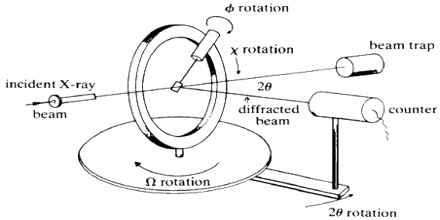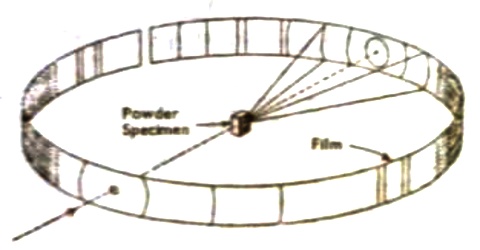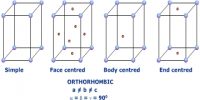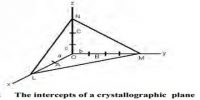The Powder Method technique for X-ray diffraction
P. Debye and P. Scherrer devised a very simple technique for obtaining X-ray diffraction data. Their technique, known as the powder method, depends on the use of a powder of the crystalline sample instead of a single crystal. The powder is usually placed in a fine capillary or made into a rod. The experimental arrangement is shown in Figure.

Figure: experimental Arrangement for X-rat powder photograph
The little crystals constituting the powder will be oriented in all directions. There will be some oriented at the proper angle for X-ray reflection from each set of planes The diffraction pattern will be just like the one which would be obtained by mounting a single crystal and turning it through all possible angles. Since the orientations of the little crystals are random there will be reflections from a large number of planes and consequently the X-ray patient will show scattering at a large number of angles. On a flat plate film the observed pattern consists of a series of concentric circles. Bragg’s law may he applied to these lines to obtain the plane spacing. In order to derive the dimensions of the unit cell from the inter-planar spacing we must know the crystal system to which the specimen belongs. This can sometimes be determined from microscopic examination.
The X-ray powder photograph is a characteristic property of a crystal. The method may, therefore, be used for identification of the components of a solid mixture. X-ray powder diffraction is most widely used for the identification of unknown crystalline materials (e.g. minerals, inorganic compounds). Determination of unknown solids is critical to studies in geology, environmental science, material science, engineering and biology.














